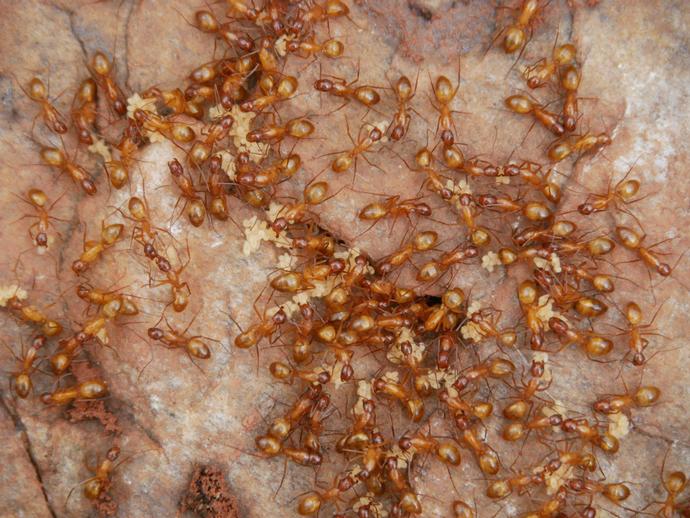April 25, 2020
I figured I should do a post about ants before our Associate Curator of Entomology Dr. Kal Ivanov stops speaking to me! Dr. Ivanov recently published a paper listing the known ant species of Virginia, and he knows more about ants than ants know about themselves. As such, he quickly identified these guys as Camponotus castaneus, a species of carpenter ant that is widely distributed throughout the eastern U.S.
Carpenter ants get their name because they build their nests in dead wood, chewing out elaborate galleries with their mandibles. While termites eat wood, carpenter ants do not; they generally forage at night for dead insects to eat. Many species of carpenter ant also tend aphids, offering them some extra protection in exchange for a taste of the sugary substance known as "honeydew" that aphids produce (honeydew is basically the poop that aphids produce after sucking the juices from plants, so you can see why they call it honeydew).
Carpenter ants can occasionally become a pest; if you have a spot on your house where the wood is moist and beginning to decompose, they may chew out a nest and take up residence. While this can be annoying, carpenter ants provide a great service by helping speed up the decomposition of dead trees out in the woods. #BenInNature
About this post: Social distancing can be difficult, but the next few weeks present a great opportunity to become reacquainted with nature. While he is working from home, Administrator of Science Ben Williams is venturing outdoors each day to record a snapshot of the unique sights that can be found in the natural world.
This post brought to you by VMNH Supporters Janet and Richard Ashby.

 Hours & Admissions
Hours & Admissions Directions
Directions

